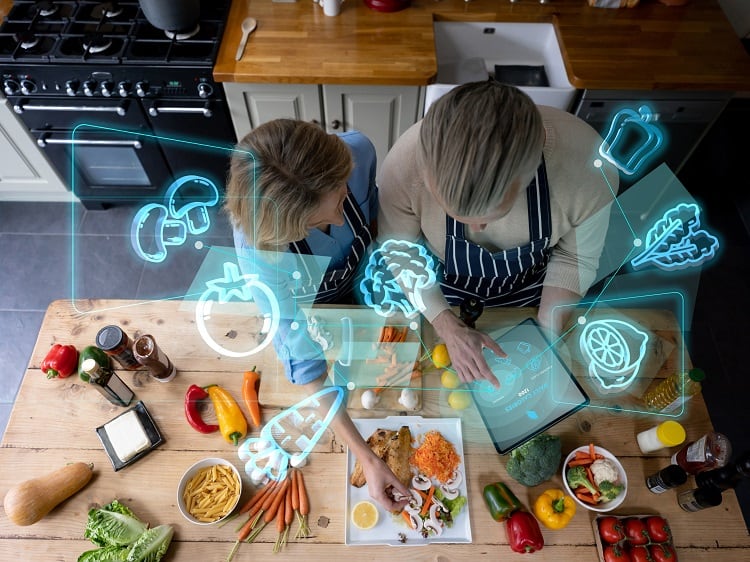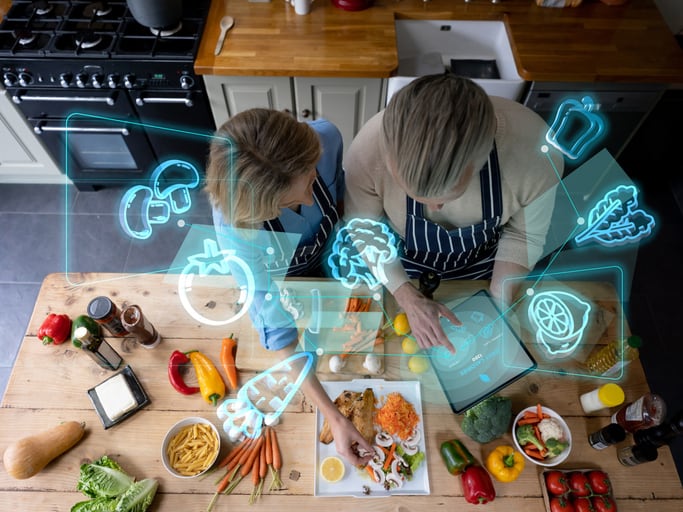AI is revolutionising a range of industries, said Tastewise CRO Ori Lavie: images, sound, text, and most importantly, food and beverage.
Tastewise, an Israeli marketing technology company with a collection of data on food and beverage, aims to step into the key role of innovator in the key niche of generative AI solutions to food and beverage NPD. “We've been talking about this for a long, long time within Tastewise,” Lavie told the delegates at the summit, “and we aim to be the Gen AI company for food and beverage, just like Midjourney is for images.”
The marketing technology firm, which works with companies such as PepsiCo, Mars and Kraft Heinz, combines generative AI technology with its data on food and beverage to streamline NPD concepts.
“When ChatGPT came out late last year. . . it was a lightbulb moment for us,” Lavie said. “We said, well, if we take a conversational engine and we couple it with our data, if we take both of those worlds, you're going to get something that's remarkable.”
TasteGPT, unveiled earlier this year, uses similar AI technologies that fuel platforms such as ChatGPT (for text) and Midjourney (for images). It focuses, however, not on one function but one field. It can do a plethora of things, but always with a focus on the world of food and beverage.
“You can ask about anything in the world in the world of food and beverage,” said Lavie. “You can ask about audiences, you can narrow it down to geographies, you can ask it to do things visually in a second.”
The Israeli tech company also released a plug-in for Microsoft Teams using AI, to, as Lavie states, ‘democratise the data around the organisation and let everyone use it’.
Another key aspect of the AI is its use of data in surveys. Almost everybody, Lavie said, uses surveys at work, but it’s not always easy to get a sample large enough to give one an accurate picture of consumer opinion. TasteGPT, Lavie revealed, can instead answer surveys with its rather more significant pool of data.
“The data is there,” he said, “whether it's our data or somebody else's data, there's millions and millions, or be it trillions, of data points, which have answers to all of these survey questions. It's just a matter of how you sample the data.
“And if we thought just a year ago that creating video from scratch is impossible, we thought that about the surveys. And then we said well, we’ll try. And what we did is we built a survey just like you build a survey every day.” The data, drawn from around the web by the AI, can answer survey questions with a far greater reach than an ordinary survey.
One of the AI’s most recently released tools is concept creation. Basically, you key in a key food term and the AI provides product suggestions, always providing a reason why it chose it, backed up by the data.
Finally, the AI can create insights into food service, seeing how different products, for example burgers, are trending around the world.
Creating the pumpkin spiced tea
At the beginning of the summit, Tastewise asked delegates to come up with a food concept. Choosing one of these concepts, the idea of a pumpkin spice tea (suggested by Tata’s Mark Donovan), Tastewise used TasteGPT to use its many functions to find out how successful such a product could be.
The first stage was market research. “What are the main motivations, what are the main claims? What do people feel when they discuss pumpkin spice and specifically pumpkin spiced tea?” Lavie asked.
“From there we went into consumption moments within our platform to see how people actually consume this, if at all. Then we created an AI based surveys, literally within the past few hours.”
Then came concept creation. “We went into major concept discovery, and that generated ten AI-based ideas based on the claim. Then we checked consumption moments again to see if it was relevant.
“We saw if there's white space opportunity. We created recipes around it, insights from food service and even packaging claims.”

The insights found on the product, and on pumpkin spice products in general, presented an idea that had potential. In people’s feelings about pumpkin spice, “comfort stood out, indulgent, cosy, these are all winter or fall emotions and feelings.
“So that gave a first indication on where we want to go. There's something interesting here. Then if you apply pumpkin to other products in the marketplace, obviously coffee stood out, and there's some growth still to it but not a lot of growth. But we found something interesting.
“So obviously pumpkin spiced tea is not really penetrated, but it is growing by about 30% year on year, in the discussions, and in what people feel about pumpkin spiced tea, which we found interesting. We said okay, we might have something here.”
As well as finding these motivations, the AI was able to scan social media, and found an existing homemade recipe for pumpkin spice tea. “So the database is evolving and giving more and more information, not just about consumer motivations but how people are actually using it. It's starting to trend, it's starting to generate interest.”
Then using the AI to create a recipe for a potential pumpkin spice tea, health benefits were also included. “It’s not just delicious but also packed with health benefits, and a high pool of protein content, a rich source of vitamin C, zinc and healthy fats; this tea is a wellness power house with all the relevant things.”





